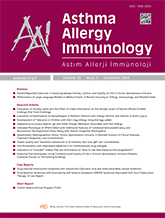


Objective: Genetic aberrations of VPS45 (Vacuolar protein sorting 45 homolog) protein, a member of the Sec1/Munc18 (SM) family, results in congenital neutropenia, bone marrow fibrosis, and extramedullary renal hematopoiesis. VPS45-associated severe congenital neutropenia is an extremely rare disorder, with only 20 cases reported so far. Patients present in the first few months of life with severe recurrent bacterial infections caused by deep neutropenia, typically unresponsive to G-CSF therapy. Here we report a cohort of 4 additional cases bearing VPS45 mutations and review the current literature data.
Materials and Methods: Next generation sequencing was performed for all patients. To determine the impact of VPS45 deficiency on in vivo lymphocytic differentiation, we performed further flow cytometric analyses.
Results: All four patients presented with severe neutropenia during the neonatal period; three out of four experienced neonatal sepsis, two had omphalitis, and one had temporal mastoiditis. Three out of four patients died before hematopoietic stem cell transplantation, typically between three months and one year of age. In addition to neutropenia, our cohort exhibited lymphopenia, prompting an investigation into the impact of VPS45 deficiency on lymphocytic differentiation. Flow cytometric analyses revealed significantly reduced absolute counts of CD4 and CD8 positive lymphocytes, with a more pronounced reduction in the CD8 population. Activation responses to phytohemagglutinin and anti-CD3 antibody were markedly decreased. Although neurological symptoms are not common in VPS45 mutation cases, all patients in our study demonstrated neuromotor delay, atypical facial features, nystagmus, cortical blindness, and generalized hypotonia. The previously reported common feature of nephromegaly was absent in our patients.
Conclusion: Our findings suggest that VPS45 deficiency should be considered in patients with progressive bone marrow failure as well as combined immunodeficiency with neuromotor retardation. Early diagnosis is crucial since early hematopoietic stem cell transplantation with myeloablative conditioning is the only therapeutic option.